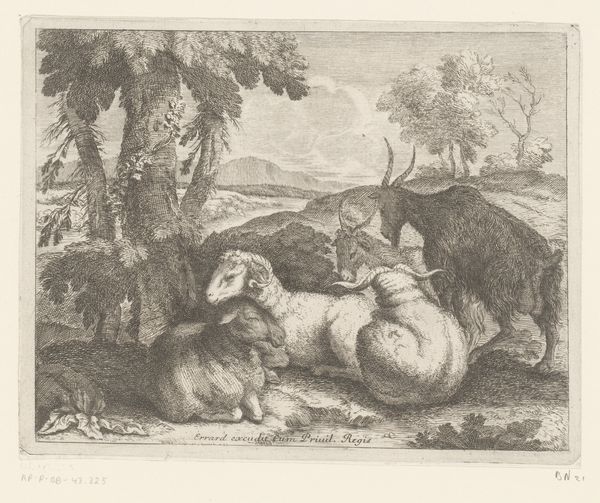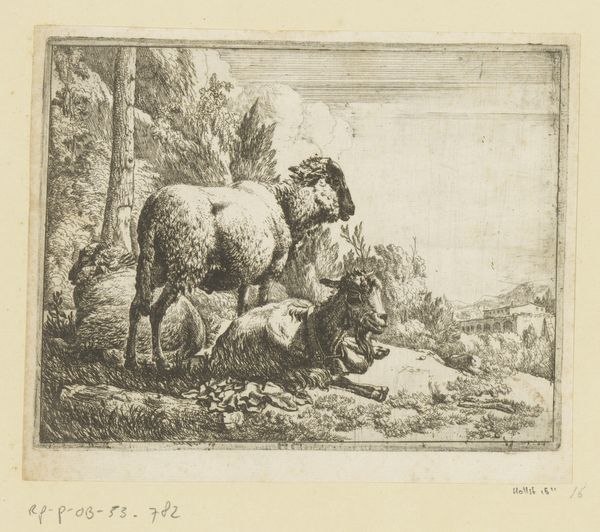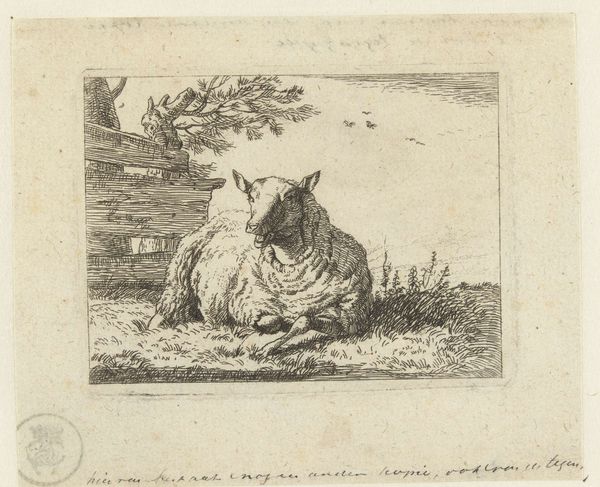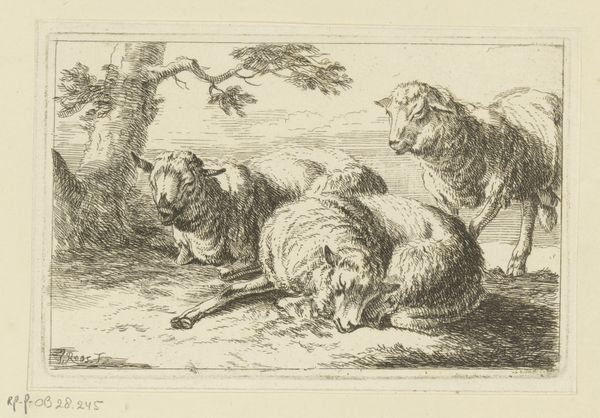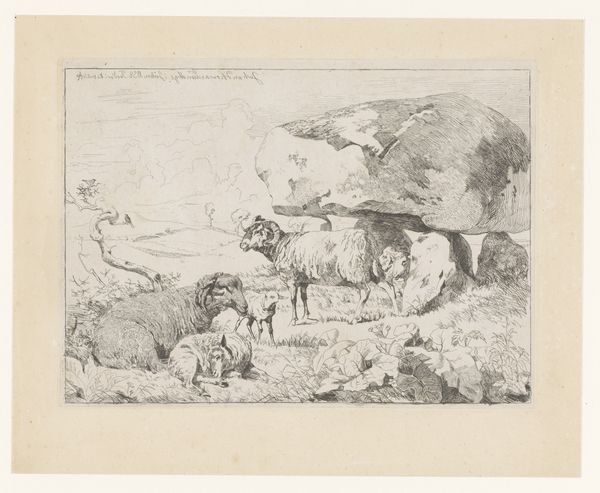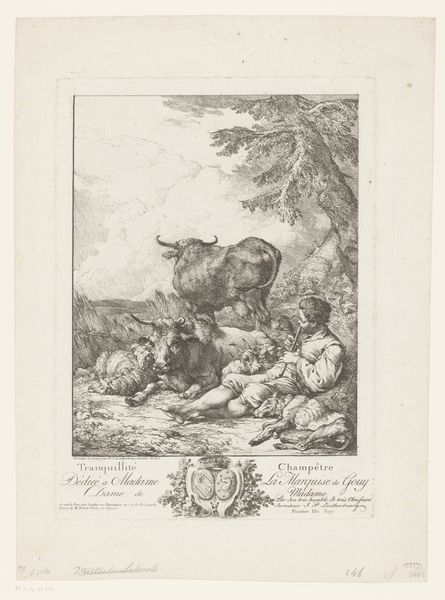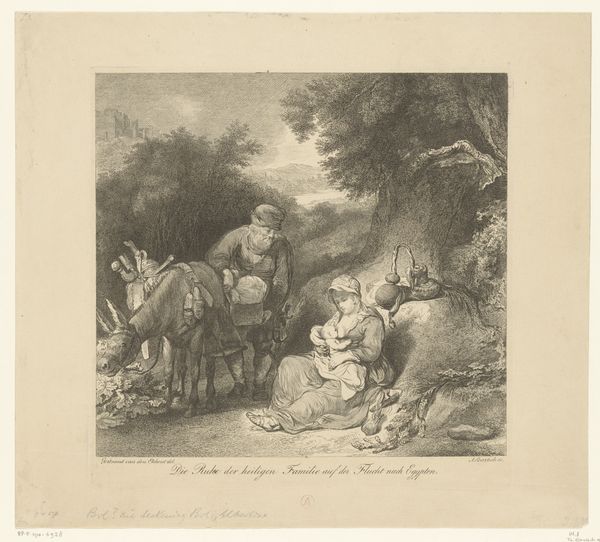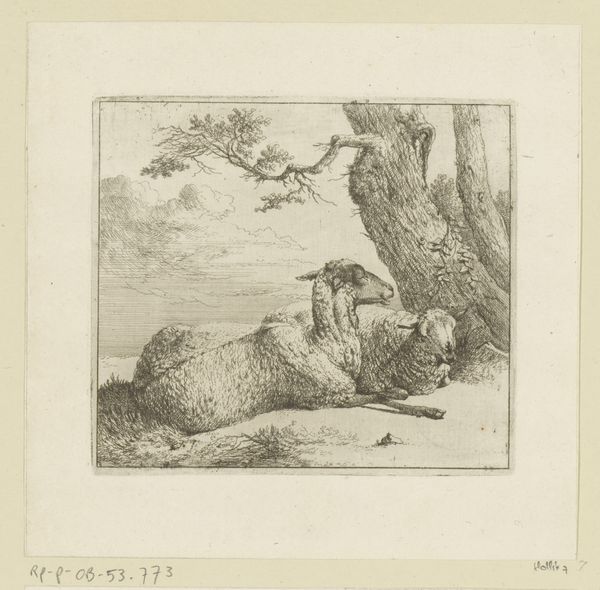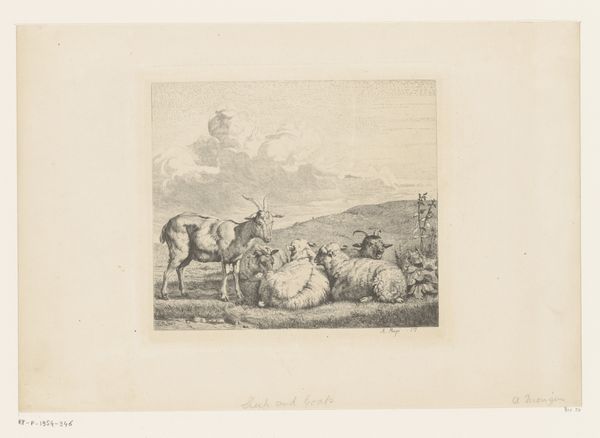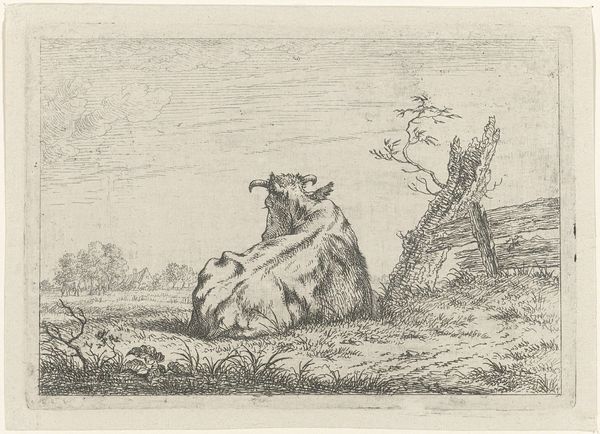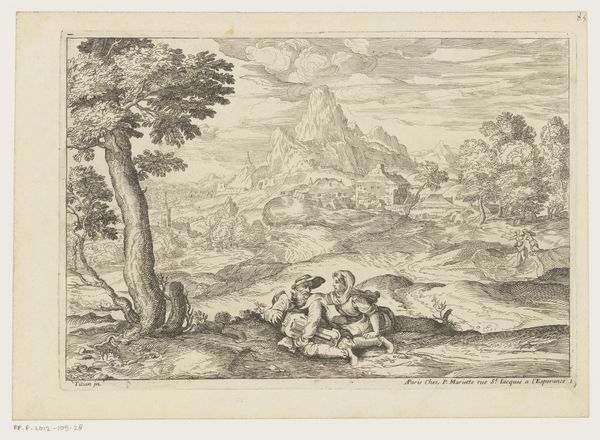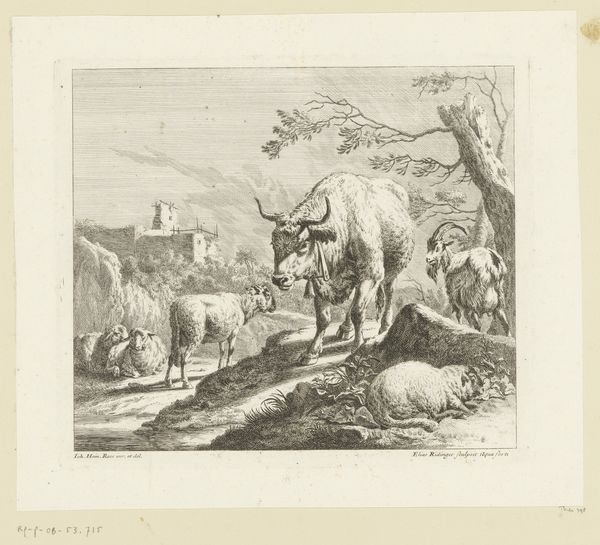
print, etching
# print
#
etching
#
landscape
#
figuration
#
genre-painting
#
realism
Dimensions: height 172 mm, width 234 mm
Copyright: Rijks Museum: Open Domain
This landscape with a lying cow was etched by an anonymous artist and is now held in the Rijksmuseum collection. In the 17th century, Dutch artists like this anonymous printmaker responded to a growing urban market for art, and the expansion of civic institutions. This etching, with its seemingly simple scene, reflects the changing social and economic landscape of the time. In a nation enriched by trade, the image of a serene cow takes on new meanings. It symbolizes prosperity, the agrarian ideal, and the careful stewardship of resources, reflecting a society grappling with its identity and values. The detailed rendering of the landscape and the prominence given to the cow may allude to the growing importance of agriculture and land ownership in Dutch society. To fully appreciate this work, we need to delve into archives, explore the economic history of the Dutch Golden Age, and understand how institutions such as the art market shaped artistic production. This etching serves as a reminder that art is always embedded in a specific social and institutional context.
Comments
No comments
Be the first to comment and join the conversation on the ultimate creative platform.
